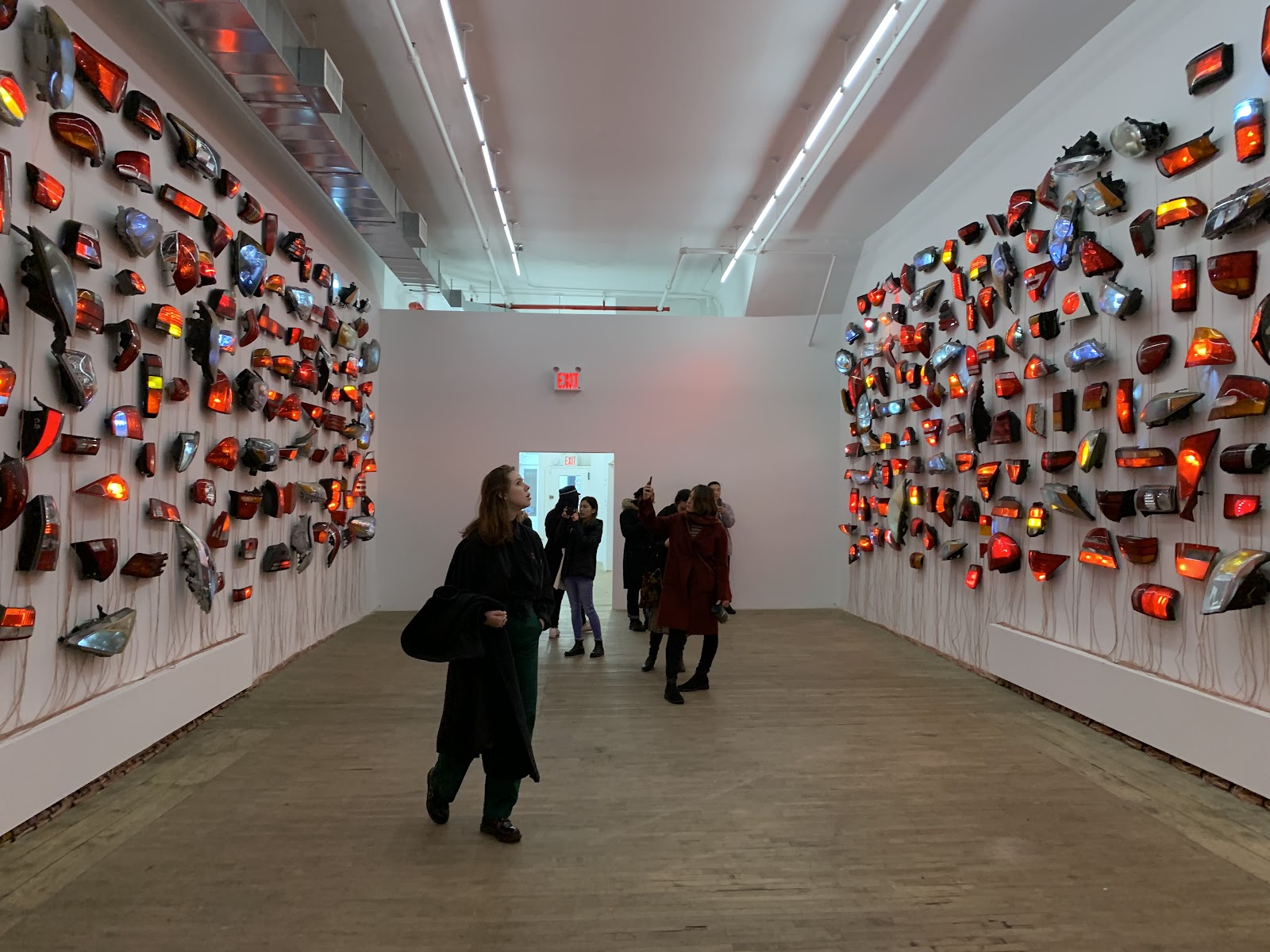skip to main |
skip to sidebar
Madeline Hollander, Heads/Tails at Bortalami Gallery
Madeline Hollander’s Heads/Tails is an intensely New York piece of art. Focused around the driving patterns of New Yorkers and stoplights around the city, the piece is oddly human despite it being a bundle of car parts. Connected to a nearby traffic light and set to turn on and off based on an algorithm of Hollander’s own design, it is impossible not to feel connected to something that's greater than a singular person. It's heartwarming to feel connected to New York as a whole in this way.
 It brings to mind a specific nostalgia to stand in this room and think of the advance of technology. but at the same time we lose something so integrally New York. All this floods immediately to mind as the lights in the room build up to a varying crescendo until each springs to life with an indignant “go f*** yourself” to the stoplight ahead.
It brings to mind a specific nostalgia to stand in this room and think of the advance of technology. but at the same time we lose something so integrally New York. All this floods immediately to mind as the lights in the room build up to a varying crescendo until each springs to life with an indignant “go f*** yourself” to the stoplight ahead.
 At times living in such a large city can feel incredibly lonely. However, there are always moments when this is disproved and we are reminded that we are all residents or the same place. Seeing this piece is one of those moments. What could be more New York than the honking, yelling, and consternation of traffic at rush hour that are all brought to mind with only a room full of tail lights.
At times living in such a large city can feel incredibly lonely. However, there are always moments when this is disproved and we are reminded that we are all residents or the same place. Seeing this piece is one of those moments. What could be more New York than the honking, yelling, and consternation of traffic at rush hour that are all brought to mind with only a room full of tail lights.

In the first sentence you suggest that the work is an, “intensely New York piece of art.”, although I can imagine various ways you could mean this, I am left wondering exactly why this piece resonates this way for you. Later, you speak of the installation being ‘oddly human’ and ‘vaguely connected to humanity’, it would be great if you could explore that further, because that's an exciting idea. In what way is the piece evoking a human connection for you? What was your experience like of the works ‘odd humanity’?
ReplyDeleteIn your second paragraph you write of the ‘melancholia’ you experienced viewing this piece, “to stand in this room and think of the advance of technology, to think of self-driving cars…” I like where you are going with this, and agree that I felt a similar dissonance over nostalgia for a world that is changing before our eyes. Later you say , “It’s necessary for progress for progress’s sake, but at the same time we lose something so integrally New York...”. I would argue that ‘Progress’ is not necessarily an inherent ‘good’ and therefore should be scrutinized as a healthy check and balance in society. ‘Progress for progress's sake’ rings a bit of a dystopian alarm bell for me. But maybe you are actually asking, ‘Is progress necessary for progress's sake?’ I’m not sure exactly what you meant but please elaborate on this. You end the second paragraph with a crescendo of emotional response to the piece that concludes with, “go f*** yourself”. I enjoy how you’ve employed a poetic style that energetically mimics the light patterns in a way, while also wondering if the concluding expletive diminishes the overall punch of the piece. I am torn, because I can see two sides of this. In your final sentence you return to the ‘New York’ theme, which i think is the least developed conceptual thread in this piece, but worth exploring further. You again feature your free-verse rhythm voice of writing again, which I think is very effective at evoking a visual, physical, and emotional kaleidoscope for the reader- I wonder if you can explore this style further.